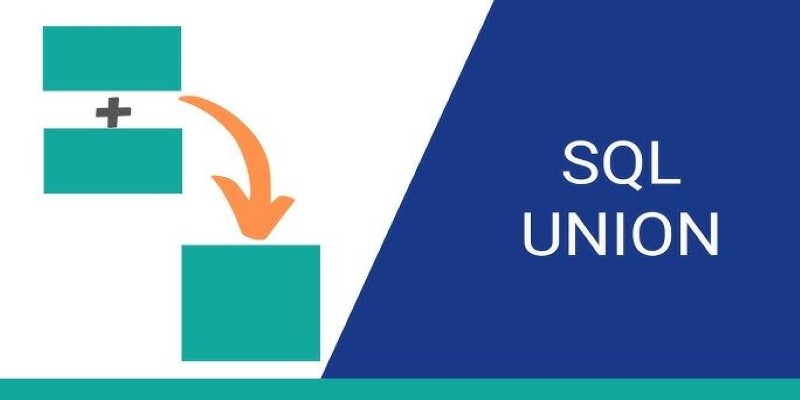Advertisement
Artificial intelligence has become a key part of modern life, showing up in tools, apps, and services we use every day. Behind the scenes, though, creating something truly innovative with AI can feel out of reach for many teams. Challenges like limited infrastructure, high upfront costs, and scaling problems often hold projects back.
Cloud computing offers a practical way around these roadblocks. By giving teams access to computing power, storage, and tools on demand, the cloud makes it much easier to build, test, and launch AI solutions quickly. It provides the flexibility and reach needed to innovate without limits.
Building and training AI models often requires enormous computing power, especially when working with deep learning and massive datasets. Not long ago, that meant companies had to pour money into rows of specialized servers — expensive to buy, difficult to maintain, and often outdated before they paid for themselves. The cloud completely changes this dynamic. Instead of sinking resources into hardware, you can simply rent the computing power you need, for exactly as long as you need it. Whether it’s running a quick experiment or training a complex model, you can scale up on demand and scale back just as easily.
Another big shift is reach. Cloud platforms let you deploy your AI models on servers located near your users, cutting down delays and improving responsiveness. That kind of global presence is tough to achieve with on-site infrastructure. Smaller teams and startups, in particular, gain a huge advantage here. They can tap into the same high-performance tools and infrastructure as large enterprises, without owning it outright. The cloud removes old barriers and gives more people the chance to bring bold, innovative AI ideas to life.
AI innovation thrives when teams can test ideas quickly and efficiently. In traditional environments, setting up servers and development environments could take weeks. That made it harder to try new approaches or iterate rapidly. The cloud changes this completely. You can create new testing environments in minutes, experiment with different model architectures, and run parallel tests without slowing down other work. If an experiment doesn't work out, you can shut it down with no ongoing cost.

Cloud providers also offer a wide variety of ready-to-use AI services, which further accelerates development. Pre-trained natural language processing tools, image recognition APIs, and voice services can serve as building blocks for your projects, saving time on foundational work. For AI development teams, this makes it easier to focus on solving specific business problems instead of building every piece from scratch. Many platforms even include automated machine learning tools that help identify the best model configurations with minimal manual effort. This shortens the time between an idea and a working solution, allowing teams to adapt quickly to feedback and new insights.
One common worry with large AI projects is cost. Training models with millions or billions of parameters can consume huge amounts of computing power. Without good planning, expenses can rise quickly and eat into budgets. The cloud makes these costs easier to manage. Providers give detailed usage reports, let you set spending limits, and automatically shut down unused resources. This kind of control means you only pay for what you need, when you need it, which is perfect for experimental and seasonal projects.
Scalability is another area where the cloud shines. Many successful AI products experience unpredictable demand. For example, a chatbot might suddenly need to handle thousands more conversations after launch. With traditional servers, scaling to meet that demand could take months and require major investments. On the cloud, you can increase your computing resources instantly to handle traffic spikes and scale back down during quiet periods. This elasticity supports sustainable AI development by ensuring your system always matches your workload without wasting resources. It also allows businesses to expand into new markets or handle unexpected growth without delays.
AI projects almost always involve multiple people — engineers, data scientists, product managers, business analysts, and domain experts — often working from different locations. The cloud supports this by providing a shared workspace where everyone can access the latest data, models, and code. Team members can collaborate in real time, track changes easily, and monitor progress without confusion. Many platforms also include built-in tools for version control, debugging, and system monitoring, which help keep everyone aligned and informed.

The cloud also offers access to advanced hardware and software tools that would be hard to acquire on your own. Many providers supply GPU- and TPU-based machines optimized for deep learning, as well as scalable storage systems designed to handle massive datasets. These resources are updated regularly, so you’re always working with current technology. For teams focused on AI development, this means you can take advantage of the latest innovations without having to maintain them yourself. You get to build smarter systems while leaving the heavy lifting of infrastructure to the cloud.
Artificial intelligence is advancing quickly, but its success depends on how effectively teams can bring their ideas to life. The cloud gives businesses of all sizes the tools and flexibility to do this without being slowed by outdated infrastructure or high costs. It provides scalable computing power, collaborative workspaces, and ready-made services that speed up AI development and make ambitious projects more achievable. Teams can experiment, adapt, and launch solutions faster, reaching more people and solving more complex problems. For anyone looking to move beyond simple prototypes and create a meaningful impact, combining AI with the cloud is a practical way forward. The cloud provides a solid foundation for turning AI potential into real-world results.
Advertisement

Need to merge results from different tables? See how SQL UNION lets you stack similar datasets together easily without losing important details

Snowflake introduces its new text-embedding model, optimized for Retrieval-Augmented Generation (RAG). Learn how this enterprise-grade model outperforms others and improves data processing

Ever wondered how databases avoid confusion? Learn how super keys help keep records unique, prevent duplicates, and make database design simpler

MIT is leading a focused initiative to integrate AI and emerging technologies into manufacturing, prioritizing real-world impact for manufacturers of all sizes

How Georgia Tech is transforming supply chain management with AI through education, research, and partnerships, creating smarter and more resilient global networks

Discover Reka Core, the AI model that processes text, images, audio, and video in one system. Learn how it integrates multiple formats to provide smart, contextual understanding in real-time

How can machines better understand videos? Explore how X-CLIP integrates video and language to offer smarter video recognition, action recognition, and text-to-video search

Wondering how databases stay connected and make sense? Learn how foreign keys link tables together, protect data, and keep everything organized

How to supercharge your AI innovation with the cloud. Learn how cloud platforms enable faster AI development, cost control, and seamless collaboration for smarter solutions

Learn simple steps to prepare and organize your data for AI development success.

Curious how Stable Diffusion 3 improves your art and design work? Learn how smarter prompts, better details, and consistent outputs are changing the game

Learn how ThoughtSpot's AI agent, Spotter, revolutionizes conversational BI for smarter and more accessible business insights